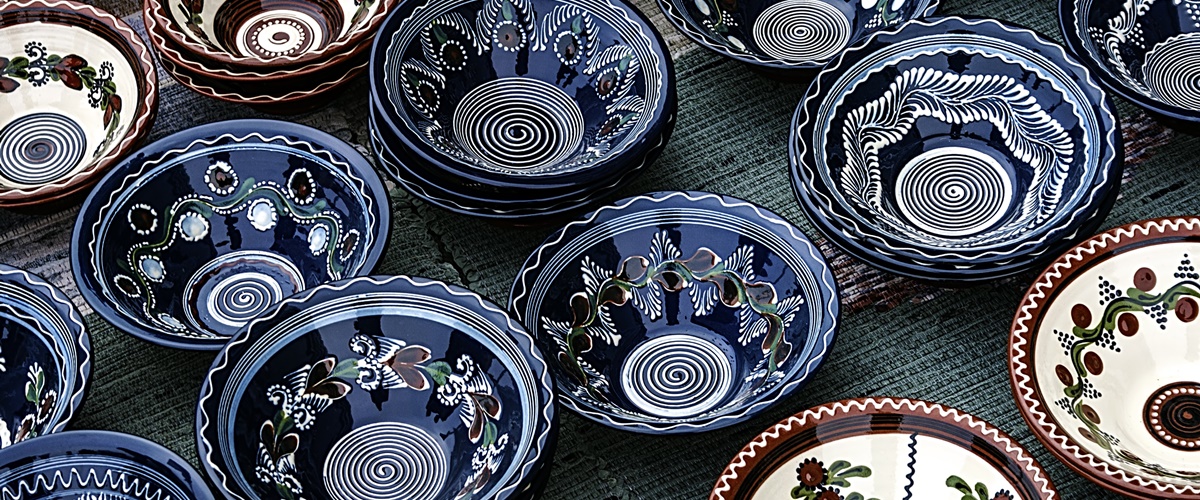The Romanian Pottery From Corund
One of the famous artcrafts in Romania, the pottery known as "Corund pottery" is unique to the Corund village in the Harghita county.
Corund's pottery manufacture was first mentioned in a document in 1613. Black ceramic production started in 1962. A total of 190 people worked in the village in 1972, and 872 potters became active in 1992.
The vessels manufactured by the Corund pottery illustrate the stylized floral and zoomorphic motifs typical of Szeklerland.
The method used to create ceramics items is the same across the nation, although the shapes and colours chosen fluctuate. After carefully mixing the clay with sufficient water and cleaning it of impurities, cut the clay into strips and shape it until it takes the desired shape on the potter's wheel. After letting the clay rest for a few days, place it in the oven. The plates are decorated with a feather before baking, which can be made of metal, cattle horn, or goose plumes.The Coronds were obviously not so conservative when it came to colour selection, as indicated by their extensive usage of other colours like black, red, yellow, blue, and other colourful shades that captivate the eye. Nearly all of their pottery is glazed with white and cobalt blue. Most potters then glaze their works of art, vitrify them, and rebake them.
The Corund people are proud of their distinctive artwork, which has diversified to include metalwork, woodwork, sculpture, and pottery.
The entire process of developing and decorating pottery is performed entirely by hand. This ensures the uniqueness of each piece of pottery and illustrates how highly the potters value their traditions.
The Corund have expanded their economy since the 11th century by trading in pottery, woodwork, and numerous other handicrafts.
The artistically crafted wall plates made by the Corund people are undoubtedly the most well-known style of pottery.
These exquisite, delicate ceramics are expertly crafted, brightly coloured on the glaze, and decorated with contrasting colours (often cobalt blue). These are art pieces that may be mounted on walls due to the fittings that come with them.
These ceramics are so unique and appreciated that it can be found all over the world. Some of the distinct designs that appear on the plates can also be seen on various fabrics, such as carpets or paintings. This pottery produces items beyond wall art.
The Corund is waiting for you to enter the world of pottery regardless of whether you love ceramics or you are simply curious about this craft. You may look at the rarest products in the world, participate in pottery classes, and even purchase the goods as a special, typical romanian souvenir.




.png)



